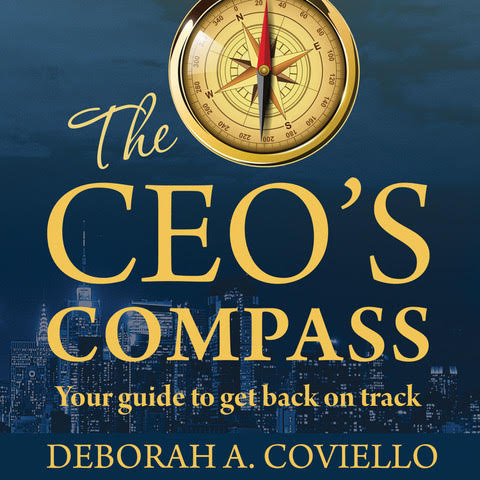As a mid-career manager, I used to say “I wish I were a fly on the wall in the director meetings so I would know what is happening and why.” In those days, I was stuck in reactionary mode, my next move dependent on data handed to me from above. I felt helpless to influence the future. I was missing a “crystal ball”; a tool similar to The CEO’s Compass allowing me to influence and solve challenges in the workplace.
I haven’t figured out how to predict tomorrow’s winning lottery numbers, but I have figured out the secret to predicting future challenges in the workplace.
For this exercise, I will pull out my compass and explain how “Process”, “Past” and “Pride” are used at the same time to gain insight.
Observe the Process of team interactions and watch for power plays
Being an engineer, sometimes collecting data is the only way I can make sense of the world. I started taking notes on observing people’s interactions and writing down my predictions. Over time, I found that these predictions of the future increased in accuracy as I honed the process of data in an interaction and then an expected outcome was recorded.
Watch for these interactions to see changes in the environment and potential calls to action (CTA):
When someone goes into the boss’s office and then walks out with extra energy in their step – most likely they’ve been given new responsibility, a new assignment or a pending promotion.
- CTA: Engage with our boss that you’re open to new opportunities or challenges and why you should be considered. If one person is changing, there should be opportunities to engage with the new project or backfill openings that result from the change.
When the boss is traveling extensively and you’re not sure what they’re doing, they’re potentially going through some strategic changes in the organization.
- CTA: Engage with your boss in a proactive way such as: I want to be proactive about my career; what are some areas of the organization I should be learning more about in case there are changes and I need to navigate quickly in the organization.
Watch for people that have started to miss deadlines, are periodically taking a day off more often than not or are disengaged from work and don’t seem to care. They’re most likely going to leave the organization.
- CTA: If the person that is disengaging is in an area you’d like to have more responsibility; discuss with your boss your interest and willingness to expand your role. What can you do proactively now to learn more about a particular area. If you understand the gaps in the person’s performance, start sharing ideas to improve the person’s area of responsibility. You may be seen as the next go to resource to fill a gap.
History repeats itself, so studying the “Past” gives you clues about the future and relationship power.
Organizational Cultures are like the Titanic and are very slow to change, so study who got ahead in the organization and who can give you clues into being proactive about your future. To get ahead by merit alone is noble, but will slow down the process. Believe me, I know! Study the people that are steady & quiet workers or those who are loud – they always seem to get amazing opportunities and here’s why:
Watch the person that is steady & quiet and who they’re having lunch with or who they spend breaks with. They may have been working together for 5, 10, 20 years and have a long history of watching each other’s backs. One may have risen to a more senior role and is the advocate for the steady & quiet.
- CTA: Align with the leader that is advocating for others and form a relationship. This can be a shortcut to moving forward, but understand what they value and how you can help them. They may start watching your back and advocating for you
Watch the loud person and for sources of strength. Look at who they’re aligned with in conversation for enriching or supporting what they said. Look at who they’re speaking to before or after their meetings for their alignments. They have a strong message, but it’s reinforced by someone in the room.
- CTA: Find your advocates. Presenting ideas is not good enough unless you’ve formed similar alliances with people that share your views. This is often done when you find someone who has shared values based on a similar past, building an alliance. When you show up to present a point, they have your back and your influence increases.
When we pay respect to an individual’s “Pride,” we build trust and champions of our causes.
Ever wonder who that really smart person in the corner is who only speaks when spoken to? You wonder about their great wisdom akin to Yoda and how they got to be so smart and survive the numerous changes in the organization and remain untouchable. These individuals have gained power through protecting their knowledge or “pride” and only a few are privy to their world. When you need these people to help us with important projects, what can you do to gain their trust?
Observe who they are aligned with and have quiet conversations that no one can hear.
- CTA: Schedule a 1-2-1 with the person you want to align with and take the time to learn about their many accomplishments and pay respect to their knowledge.
- CTA: Seek to understand why they spend more time with certain individuals and if they were part of their past successes.
- CTA: Ask for additional time to learn about their accomplishment in more detail and develop a bit of expertise in their area. This way you can advocate for them during a meeting as you have paid respect to their knowledge
When we pay respect to their “Pride” or area of expertise, they start watching out for you. They pull you aside and share information with you. It is up to you to determine if it’s relevant or are they trying to pull you astray or into their world of alliances.
Very often these people have been burned and are protective of their knowledge. They’re seeing if you will be aligned with them or not. It’s a delegate balance, but having these folks on your side can be mutually beneficial.
Now given all these compass points to understand the future and use relationships to gain insight and position, how do you apply all of this?
I stayed away from forecasting for many years, but later learned it was an essential skill not taught in school nor cultivated in your career, unless you had an advocate.
So if you don’t have an advocate, following some of these relationship building skills with the use of “Process,” “Past,” and “Pride” from The CEO’s Compass, you can use your own crystal ball to influence the future you want to have.
If this makes sense, but you’d like to learn more about applying these principles to your situation, you can email me, direct message me on linkedin or simply grab a few minutes on my calendar.
I find through casual conversation leveraging The CEOs Compass often has all the answers for you to get back on track.
The CEO’s Compass: Your Guide to Get Back on Track – If you’re that leader who feels in their gut something is off track, this could be the resource for you.

Resources
Good Reads
The Long Game by Dorie Clark – finally finished this great work; I mentioned it over the past few weeks, but it came at a time where I’ve put in so much work into building my career and business. The strong message of quality & consistency and staying true to the strategy ultimately yields results. I so needed this read and recommend you read as well!
Good Music
Wake up, Moving on by Kevin Penkin – I was a little down this past week as not everything I had invested in was showing results. We need these moments of doubt to pause and reflect on how far we’ve come and how much closer we are to what we want to achieve. When we validate our convictions, you have a renewed sense of purpose and drive to continue forward. This song was light and refreshing and playful and lifted my spirits as I listened and pondered my future. I do hope you enjoy it.
Good Advice
“If we just get a little bit better, we have a massive return on our overall success
and the success of our organization.”
–Mark Herschberg















